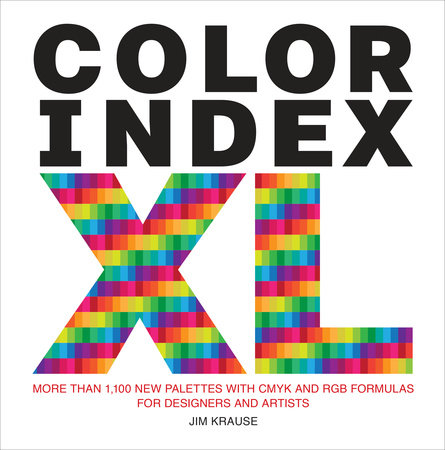Color Index XL
More than 1,100 New Palettes with CMYK and RGB Formulas for Designers and Artists
Jim Krause
Paperback
October 3, 2017 | ISBN 9780399579783
AmazonBarnes & NobleBooks A MillionBookshop.orgHudson BooksellersPowell'sTargetWalmart
Ebook
October 3, 2017 | ISBN 9780399579790
AmazonApple BooksBarnes & NobleBooks A MillionGoogle Play StoreKobo
About the Book
This updated, expanded, and oversized inspirational resource presents 1,100 color palettes, with light, bright, dark, and muted varieties for each one, making it the most expansive palette selection tool available.
Color Index XL provides aspiring designers, artists, and creative individuals working with color with an indispensable, one-stop method for reviewing and selecting current, up-to-date color palettes for their creative projects. Designer and lecturer Jim Krause's classic resource is back with a new approach that presents each group of palettes in an oversized form for easy visual review, and bleeding to the edge of the page (edge indexing) for quick access. By providing variations for each palette, Krause ensures that creatives can find the best color selection for each project's needs. This book serves as the perfect resource for teachers, students, and professionals of all kinds in the art and design space who want to stay up-to-date on the ever-evolving trends in color.
Color Index XL provides aspiring designers, artists, and creative individuals working with color with an indispensable, one-stop method for reviewing and selecting current, up-to-date color palettes for their creative projects. Designer and lecturer Jim Krause's classic resource is back with a new approach that presents each group of palettes in an oversized form for easy visual review, and bleeding to the edge of the page (edge indexing) for quick access. By providing variations for each palette, Krause ensures that creatives can find the best color selection for each project's needs. This book serves as the perfect resource for teachers, students, and professionals of all kinds in the art and design space who want to stay up-to-date on the ever-evolving trends in color.
Read more
Close




